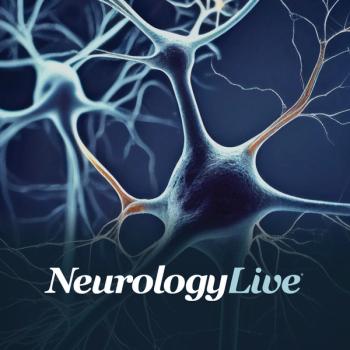
Using Digital Data to Improve Parkinson Disease Management: Ro'ee Gilron, PhD & Aiden Arnold, PhD, MSc
The lead neuroscientist and lead data scientist at Rune Labs talked about leveraging mobility data to monitor progression in patients with Parkinson disease. [WATCH TIME: 7 minutes]
WATCH TIME: 7 minutes
"[We are trying to] package a lot of this information to share with clinicians so that they can better assess and tend to the patients [with PD] that are at higher risk [events] that impact them such as falls or emergency room visits."
In 2022, the FDA granted 510(k) clearance to Rune Labs’ StrivePD software ecosystem for Parkinson disease (PD) to collect patient symptom data through measurements made by Apple Watch.1 Through a combination of wearable technology and self-reported symptom information with brain imaging, electrophysiology, genetic and other clinical data, the software enables a data-driven approach for PD. In addition, StrivePD on Apple Watch makes it easy for patients living with PD to track and log their symptoms, helping them to have better control over their care.
A recent study using Rune Labs’ real-world dataset provided an array of long-term trends in wearable data from over 1000 patients during early, mid and late stages of PD progression. The information revealed in the data included tremor and dyskinesia, mobility metrics and sleep data paired to medication information, demographic and patient-reported outcome data among participants. Thus, these data on patients may have the potential to improve the design of clinical trials, offer run in data, and assess effect sizes of common therapies in PD compared to traditional approaches.2
These findings were presented at the 2024 International Conference on Alzheimer’s and Parkinson’s Disease (AD/PD), held March 5-9 in Lisbon, Portugal, by Ro'ee Gilron, PhD, lead neuroscientist, and Aiden Arnold, PhD, MSc, lead data scientist, at Rune Labs. Recently, Gilron and Arnold sat down with NeurologyLive® to further discuss how the technology utilizes iPhone data to help monitor PD progression. The duo also spoke about the potential benefits of continuous monitoring over traditional periodic clinical assessments for PD. Moreover, they talked about how the technology could potentially improve the design and effectiveness of clinical trials for PD treatments.
REFERENCES
1. Rune Labs Secures FDA Clearance for Parkinson's Disease Monitoring through StrivePD Ecosystem on Apple Watch. News Release. Rune Labs. Published June 13, 2022. Accessed May 23, 2024. https://www.prnewswire.com/news-releases/rune-labs-secures-fda-clearance-for-parkinsons-disease-monitoring-through-strivepd-ecosystem-on-apple-watch-301566472.html
2. Gilron R, Arnold A, Jansen T, Chen W. Monitoring Parkinson’s Disease Symptom Progression With Wearable Devices. Presented at: AD/PD; March 5-9, 2024.
Newsletter
Keep your finger on the pulse of neurology—subscribe to NeurologyLive for expert interviews, new data, and breakthrough treatment updates.


































